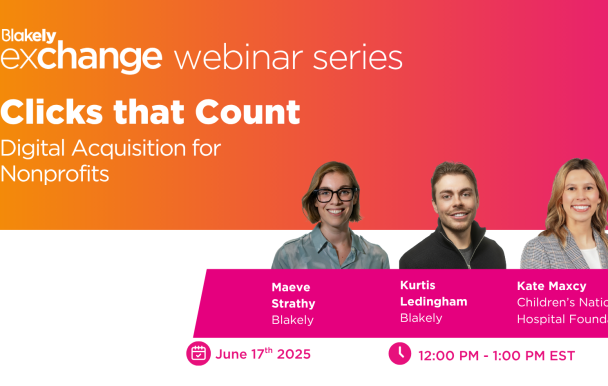
Starting the year off on the right foot
At this time of year, it can be hard to think about anything other than what’s right in front of you – year-end media performance, your next email, your December 31st revenue target…
But don’t lose sight of 2022! Block off your calendar whenever you can grab the time and set yourself up for success in the new year.
To help you focus, here are some things to think about:
Priorities & Objectives
What is your organization trying to achieve in 2022? What do you consider your biggest opportunities? What KPIs are being measured? And what are you going to prioritize in your program?
Don’t rush into outlining what you’re going to do, i.e., campaigns and tactics. Start with what your objectives are, then use them to help guide your planning and budgeting.
Audiences
What audiences are you targeting in 2022? General population? Lapsed? Monthly? Mid-Level? All of the above? Strategies that are rooted in audiences – where they are now and where you want to move them to – help you leverage channels and tactics to reach your overall program goals.
HOT TIP: When we say audiences, don’t think 15+ segments like you might see in direct mail. Think higher-level, because ideally you shouldn’t be targeting more than 6-10 audience groups.
Content
What do you want to say in 2022? What will your communications focus on? What do you want to tell your donors about? What are your priority funding areas?
When you determine your key messages / themes, it helps you plan out communications across the year. Something we work on with clients are quarterly fundraising propositions – a unique reason to give for each campaigning period that anchors all tactics across channels.
Don’t feel like you need to land on one content area only. Even with a quarterly fundraising proposition, there are opportunities to tell more than one story, or even better – to test content! Deliver different content to audiences, and that testing and learning can inform future campaigning throughout the year.
Channels
I mentioned above not to rush into the campaigns and tactics, but once you’ve established goals, outlined target audiences, and planned out content, you can start thinking channels.
Based on what you’re trying to achieve, and individual audience objectives, what channels should you be reaching prospects and donors on?
You may be inclined to stay status quo on your primary channels (i.e., email, direct mail, paid digital media), but we encourage you to think beyond that.
Rather than say, “We’ll email our donors!” think more deeply on email cadence, frequency, segmentation and offer. And instead of just doing a rinse and repeat approach on direct mail, consider how each DM touchpoint can be optimized to move your audiences to take action, and achieve objectives as part of your overall program goals, too.
Same with paid digital – have you settled into a bit of a pattern of same ol’ Google display ads, Facebook, Instagram and Search? Those are core, effective paid digital channels for fundraising, but there are many more to explore. Even Snapchat is driving donations (not at a low cost, at this point, but the channel has potential!). Consider a test budget for new channels to gain insights and move your program forward.
And finally, don’t forget your owned digital real estate, as we like to call it. Your social channels, your website… any digital properties you own that can be leveraged in your communications and campaigning. Don’t silo those channels off on their own; consider them as part of your overall channel mix as your website especially can play an important part in achieving your goals.
Offers
The last area we want you to think about is your offers – what are you asking people to do?
Are you asking them to give for the first time, give monthly, reactivate their giving, give in honour of someone, make a gift in their will…?
Think about what offer you want to put in front of different audiences based on where you want them to move to, and ensure your offers are coordinated in market.
The point isn’t to put a bunch of offers in front of donors and prospects and ask them to take their pick; it’s to be smart and strategic about what you’re asking someone to do, and how and where you’re asking them to do it.
So, there you go – we hope these questions inspire you and/or prompt some thinking to help you prepare for 2022. Good luck!









